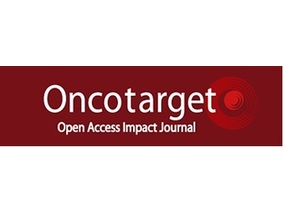 “Phytocannabinoids are unique terpenophenolic compounds predominantly produced in the glandular trichomes of the cannabis plant (Cannabis sativa L.). The delta-9- tetrahydrocannabinol (THC) is the main active constituent responsible for the plant’s psychoactive effect and, together with the non- psychoactive cannabidiol (CBD), the most investigated naturally occurring cannabinoid.
“Phytocannabinoids are unique terpenophenolic compounds predominantly produced in the glandular trichomes of the cannabis plant (Cannabis sativa L.). The delta-9- tetrahydrocannabinol (THC) is the main active constituent responsible for the plant’s psychoactive effect and, together with the non- psychoactive cannabidiol (CBD), the most investigated naturally occurring cannabinoid.
The first report on the antitumor properties of cannabis compounds appeared more than forty years ago, but the potential of targeting the endocannabinoid system in cancer has recently attracted increasing interest. Our study aimed to review the last decade’s findings on the anticancer potential of plant- derived cannabinoids and the possible mechanisms of their activity.
A large body of in vitro data has been accumulated demonstrating that phytocannabinoids affect a wide spectrum of tumor cells, including gliomas, neuroblastomas, hepatocarcinoma as well as skin, prostate, breast, cervical, colon, pancreatic, lung and hematological cancer.
It has been found that they can stop the uncontrolled growth of cancer cells through the cell-cycle arrest, inhibition of cell proliferation and induction of autophagy and apoptosis. They can also block all the steps of tumor progression, including tumor cell migration, adhesion and invasion as well as angiogenesis. The observed effects are mainly mediated by the cannabinoid CB1 and/or CB2 receptors, although some other receptors and mechanisms unrelated to receptor stimulation may also be involved.
The majority of available animal studies confirmed that phytocannabinoids are capable of effectively decreasing cancer growth and metastasis in vivo. THC was found to be effective against experimental glioma, liver, pancreatic, breast and lung cancer while CBD showed activity against glioma and neuroblastoma, melanoma, colon, breast, prostate and lung cancer. Further in vitro and in vivo studies also greatly support their use in combination with traditional chemotherapy or radiotherapy, which results in improved efficiency, attenuated toxicity or reduced drug resistance.
Taken together most of available preclinical results emphasize the extensive therapeutic potential of THC and CBD in various types of cancers. The potential clinical interest of cannabinoids is additionally suggested by their selectivity for tumor cells as well as their good tolerance and the absence of normal tissue toxicity, which are still the major limitations of most conventional drugs. The accumulated preclinical evidence strongly suggests the need for clinical testing of cannabinoids in cancer patients.”




 “Currently, the involvement of the endocannabinoid system in cancer development and possible options for a cancer-regressive effect of
“Currently, the involvement of the endocannabinoid system in cancer development and possible options for a cancer-regressive effect of 

 “The endocannabinoid system is a complex and nearly ubiquitous network of endogenous ligands, enzymes, and receptors that can also be stimulated by exogenous compounds such as those derived from the marijuana plant, Cannabis sativa.
Recent data have shown that the endocannabinoid system is fully functional in the skin and is responsible for maintaining many aspects of skin homeostasis, such as proliferation, differentiation, and release of inflammatory mediators. Because of its role in regulating these key processes, the endocannabinoid system has been studied for its modulating effects on both inflammatory disorders of the skin and skin cancer.
Although legal restrictions on marijuana as a Schedule I drug in the USA have made studying
“The endocannabinoid system is a complex and nearly ubiquitous network of endogenous ligands, enzymes, and receptors that can also be stimulated by exogenous compounds such as those derived from the marijuana plant, Cannabis sativa.
Recent data have shown that the endocannabinoid system is fully functional in the skin and is responsible for maintaining many aspects of skin homeostasis, such as proliferation, differentiation, and release of inflammatory mediators. Because of its role in regulating these key processes, the endocannabinoid system has been studied for its modulating effects on both inflammatory disorders of the skin and skin cancer.
Although legal restrictions on marijuana as a Schedule I drug in the USA have made studying  “The skin is the largest organ of the body and has a complex and very active structure that contributes to homeostasis and provides the first line defense against injury and infection.
In the past few years it has become evident that the endocannabinoid system (ECS) plays a relevant role in healthy and diseased skin.
Specifically, we review how the dysregulation of ECS has been associated to dermatological disorders such as atopic dermatitis, psoriasis, scleroderma and skin cancer. Therefore, the druggability of the ECS could open new research avenues for the treatment of the pathologies mentioned.
Numerous studies have reported that phytocannabinoids and their biological analogues modulate a complex network pharmacology involved in the modulation of ECS, focusing on classical
“The skin is the largest organ of the body and has a complex and very active structure that contributes to homeostasis and provides the first line defense against injury and infection.
In the past few years it has become evident that the endocannabinoid system (ECS) plays a relevant role in healthy and diseased skin.
Specifically, we review how the dysregulation of ECS has been associated to dermatological disorders such as atopic dermatitis, psoriasis, scleroderma and skin cancer. Therefore, the druggability of the ECS could open new research avenues for the treatment of the pathologies mentioned.
Numerous studies have reported that phytocannabinoids and their biological analogues modulate a complex network pharmacology involved in the modulation of ECS, focusing on classical